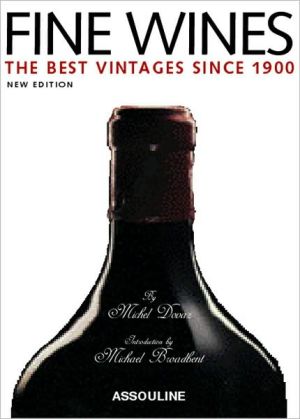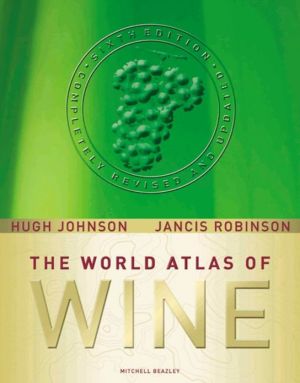Geography of Wine: How Landscapes, Cultures, Terroir, and the Weather Make a Good Drop
Wine is more than taste, smell, and appearance—it is a reflection of a place and its people. Why is Bordeaux a great place for red wines? Why do some places produce Rieslings and others produce Chardonnay? A fun and fascinating examination of terroir (the French word for the geography of a vineyard) this book takes connoisseurs—and potential connoisseurs—on a tour of wine regions, and explains the principles geographers use to understand the critical factors that make up the “wine...
Search in google:
Wine is more than taste, smell, and appearance—it is a reflection of a place and its people. Why is Bordeaux a great place for red wines? Why do some places produce Rieslings and others produce Chardonnay? A fun and fascinating examination of terroir (the French word for the geography of a vineyard) this book takes connoisseurs—and potential connoisseurs—on a tour of wine regions, and explains the principles geographers use to understand the critical factors that make up the “wine character” of a place. From the Loire Valley to Napa Valley, Madeira to South Africa, Australia to Chile, The Geography of Wine is an entertaining and informative introduction to viticulture for worldly wine lovers everywhere. Publishers Weekly Sommers, a professor of geography, explains the role that landscape, history, economics and culture play in wine regions from Burgundy to Australia to California. While the varied microclimates of the Rhineland, for example, and unique soil of Bordeaux make for exquisite Riesling from the former and the characteristic cabernet sauvignon of the latter, environmental conditions like these are but one part of viticulture's complex geography. Historical factors such as colonialism, trade and urbanization also determine what wines are cultivated and where. As well, the economic geography of contemporary vineyards is ever-evolving: retail venues and the marketability of a product vary enormously, the Internet has broadened the market for wine and conglomerates are an increasing presence. In his wide-ranging analysis of the obvious and imperceptible elements that characterize a wine region and its rewards, Sommers tips his glass to the steadfast amour between viticulture and geography. (Mar.)Copyright 2007 Reed Business Information
Geography and the Study of Wine 1Wine Landscapes and Regions 11Saint-Emilion 19The Climatology of Viticulture 23Spain 40Microclimate and Wine 45The Rhine and Its Tributaries 55Grapes, Soil, and Terrior 59Bordeaux 78Biogeography and the Grape 83The Loire Valley 95Viticulture, Agriculture, and Natural Hazards 101California 122Wine and Geographic Information Systems 127Oregon and Washington State 136Winemaking and Geography 141Oporto and Cadiz 151Wine Diffusion, Colonialism, and Political Geography 157South Africa and Chile 169Urbanization and the Wine Geography 175Burgundy 179Economic Geography and Wine 187Australia 195Communism, Geography, and Wine 199Eastern Europe 207Geography and Wine's Competitors: Beer, Cider, and Distilled Spirits 211Scotland 219Wine, Culture, and the Geography of Temperance 223America East of the Rockies 230Regional Identity, Wine, and Multinationals 235Champagne 249Localism and Wine Tourism 253Central Italy 259Where Wine Takes Me 263Appendix 273Further Reading 277Index 281Photo Credits 291
\ Publishers WeeklySommers, a professor of geography, explains the role that landscape, history, economics and culture play in wine regions from Burgundy to Australia to California. While the varied microclimates of the Rhineland, for example, and unique soil of Bordeaux make for exquisite Riesling from the former and the characteristic cabernet sauvignon of the latter, environmental conditions like these are but one part of viticulture's complex geography. Historical factors such as colonialism, trade and urbanization also determine what wines are cultivated and where. As well, the economic geography of contemporary vineyards is ever-evolving: retail venues and the marketability of a product vary enormously, the Internet has broadened the market for wine and conglomerates are an increasing presence. In his wide-ranging analysis of the obvious and imperceptible elements that characterize a wine region and its rewards, Sommers tips his glass to the steadfast amour between viticulture and geography. (Mar.)\ Copyright 2007 Reed Business Information\ \








